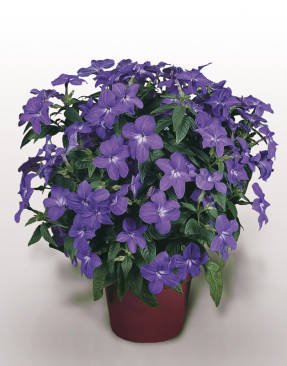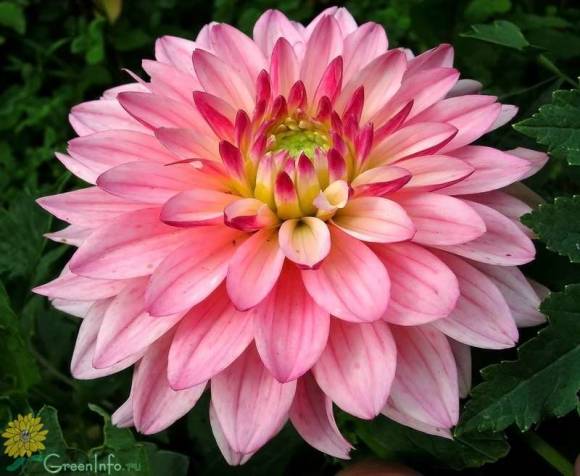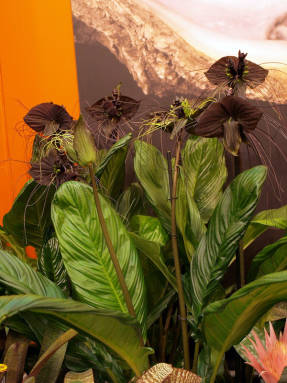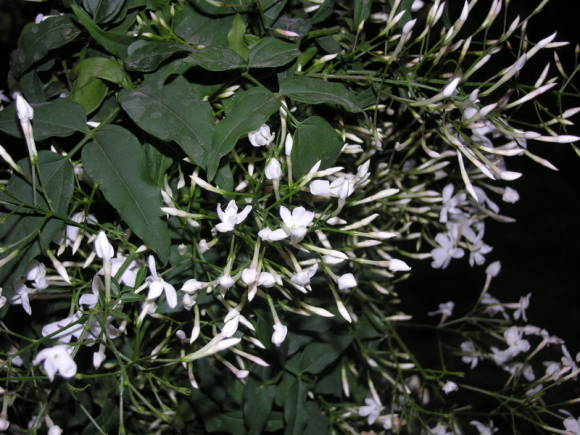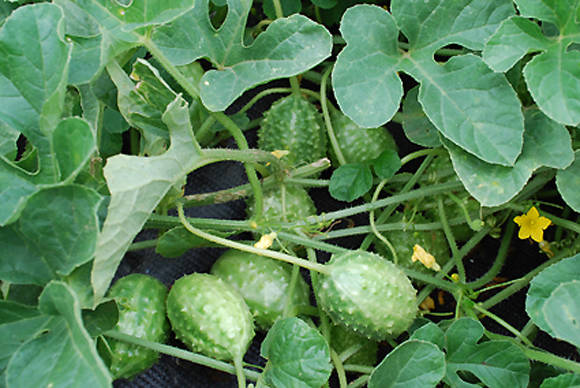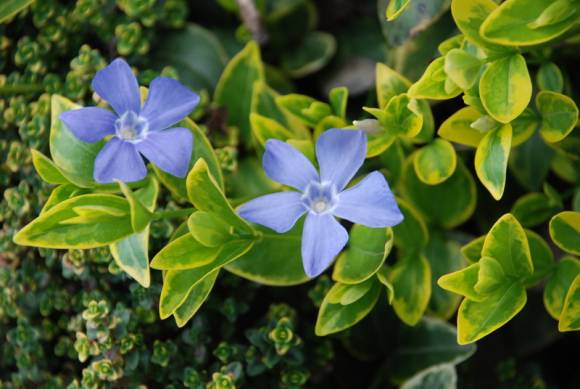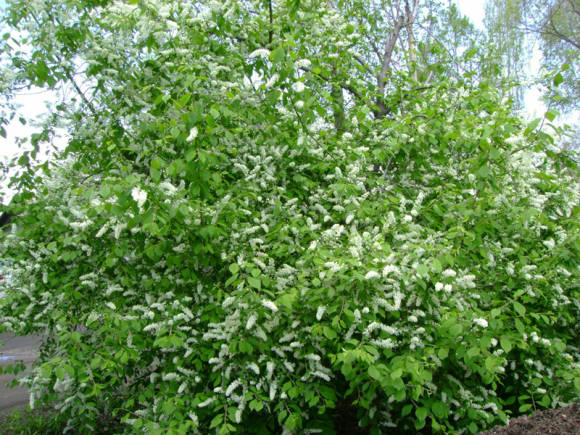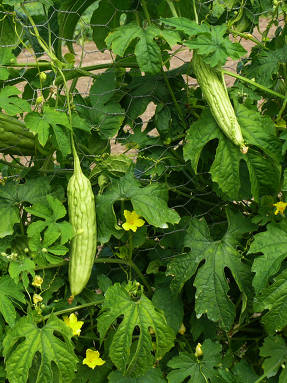Not all growers are yet familiar with calibrachoa. This is a very fashionable plant now, designed to create hanging gardens in hanging baskets. You can plant the calibrachoa by itself, in a separate planter, and admire the neat blooming cloud all summer. And you can make a mix with her participation, combining with petunia, surfinia, lobelia, verbena and other plants, if only their requirements for soil conditions, watering, lighting are similar.

A million bells
The plant vaguely resembles petunias and surfinia, only in a reduced form. But this is not a miniature copy of these plants; calibrachoa has been placed in a separate genus. Their difference is that the calibrachoa stem lignifies more quickly and begins to actively branch, forming numerous falling shoots covered with very small, like seeds, lanceolate leaves. The flowers are also very small (no more than 3 cm in diameter), but there are so many of them that the plant looks like a blooming ball during flowering. It's not for nothing that the modern series of calibrachoa varieties are called Superbells and Millionbells. The name of the latter is translated as "Million Bells".

The varietal variety of calibrachoa is great, and there are even two-color varieties (with a throat painted in a different color) and varieties with orange, orange, bright yellow flowers in the assortment. You will not find such "sunny" colors among, for example, petunias! There are varieties with simple and double flowers, they also differ in the habit of the bush, the thickening of the shoots, the length of internodes, the degree of foliage. Some varieties are more resistant to bad weather, some less. Some grow faster, others slower, and still others, not yet growing properly, are already blooming. There are varieties that bush themselves, without regularly pinching the tops of the shoots, and there are those that stand out from the general picture, the shoots of which will have to be pinched during the growing season. In general, you can choose a variety for every taste and achieve harmonious combinations with other plants.

Loves the sun, does not like overflow
Growing conditions... Calibrachoa needs a sunny spot, sheltered from the winds, which can easily break fragile shoots. But at first, you should follow the plant carefully - in the scorching sun, the flowers of some varieties can fade and fade.
Watering... Probably the most important point is the watering regime. Calibrachoa must not be poured! The plant may not survive even the slightest excessive waterlogging. Therefore, it is advisable to remove the plant under a canopy before the rain. It should be watered at the root as the earthen coma dries, but do not allow it to dry completely.

Priming... The soil for containers or hanging baskets is prepared from humus, peat, turf or leaf soil and sand. The percentage of these components can be different, the main thing is that the mixture is nutritious, loose and at the same time moisture-consuming. Lime (10-20 g / 10 l) is added to the soil with high acidity. In addition, slowly dissolving complex mineral fertilizers must be added to the soil mixture for small-volume vessels. In this case, humus can be added to the mixture, but manure - in no case. And be sure - perlite or vermiculite for the looseness of the substrate.
Top dressing... When preparing the soil, it is better to immediately add "long-playing" complex fertilizers (prolonged action) in granules, for example, Osmokot, Bazakot, among domestic ones, you can choose something suitable from the Fertik line.
But keep in mind that these fertilizers will not be enough for the plant for the entire season. 1.5-2 months after planting, you will still need to feed calibrachoa, alternating complex fertilizer with potassium monophosphate with every second or third watering. Remember that phosphorus and potassium contribute to bud formation and fuller flowering. Fertilizing (complex or fractional), the plant must receive once a week without fail.
Calibrachoa responds well to foliar dressing with specially designed fertilizers with microelements, as well as stimulants Epin, Zircon, Energen (a couple of times a month, alternating with root dressings). You can sometimes spray with a weak solution of potash fertilizers. And prophylactic spraying with Iron Chelate against chlorosis, which can occur due to excessive waterlogging of the soil, will be beneficial.

Protection against diseases and pests... To prevent powdery mildew from starting up, it is better to carry out preventive spraying and watering with biological preparations - Fitosporin-M, Gamair, Alirin-B. In case of detection of foci of the disease, urgently apply Topaz, Skor, and not once, but repeating the treatment 3-5 days before recovery.
Regularly inspect the shoots - whether the tips of the shoots are covered with aphids, whether a spider mite or whitefly has settled. If anything, do not pull - immediately treat with appropriate insecticides.
Growing tank volume... It is better to choose a planter for growing calibrachoa squat - not high, but wide, with a volume of 3-5 liters. There must be holes in the bottom for water drainage, and at the bottom it is desirable to have a layer of expanded clay.
How many rooted cuttings should be planted in pots? One stalk is able to grow well and form a lush head of flowers in a volume of 4.5 liters. But you can also plant 2 plants in a 3-liter planter. They will feel good, only they will have to water the plants more often.

Cutting calibrachoa
When cutting, you can use growth regulators that stimulate rooting (Kornevin et al.), But, as a rule, cuttings root well without these substances. Rooting time is about 2 weeks. During rooting, cuttings are sprayed with water 1-2 times a day, making sure that the soil is moist, but not too damp. As soon as the length of the roots of the cuttings reaches 1-1.5 cm, they can be transplanted into pots with a diameter of 5 cm. To obtain more bushy plants, the seedlings are pinched over 4-5 leaves, if necessary, the pinching can be repeated after 2 weeks. After a month and a half, the overgrown plants are transferred into pots with a diameter of 11-13 cm and placed freely or suspended over the shelves.
Read more in the article Cuttings of calibrachoa as a method of winter preservation of plants.

